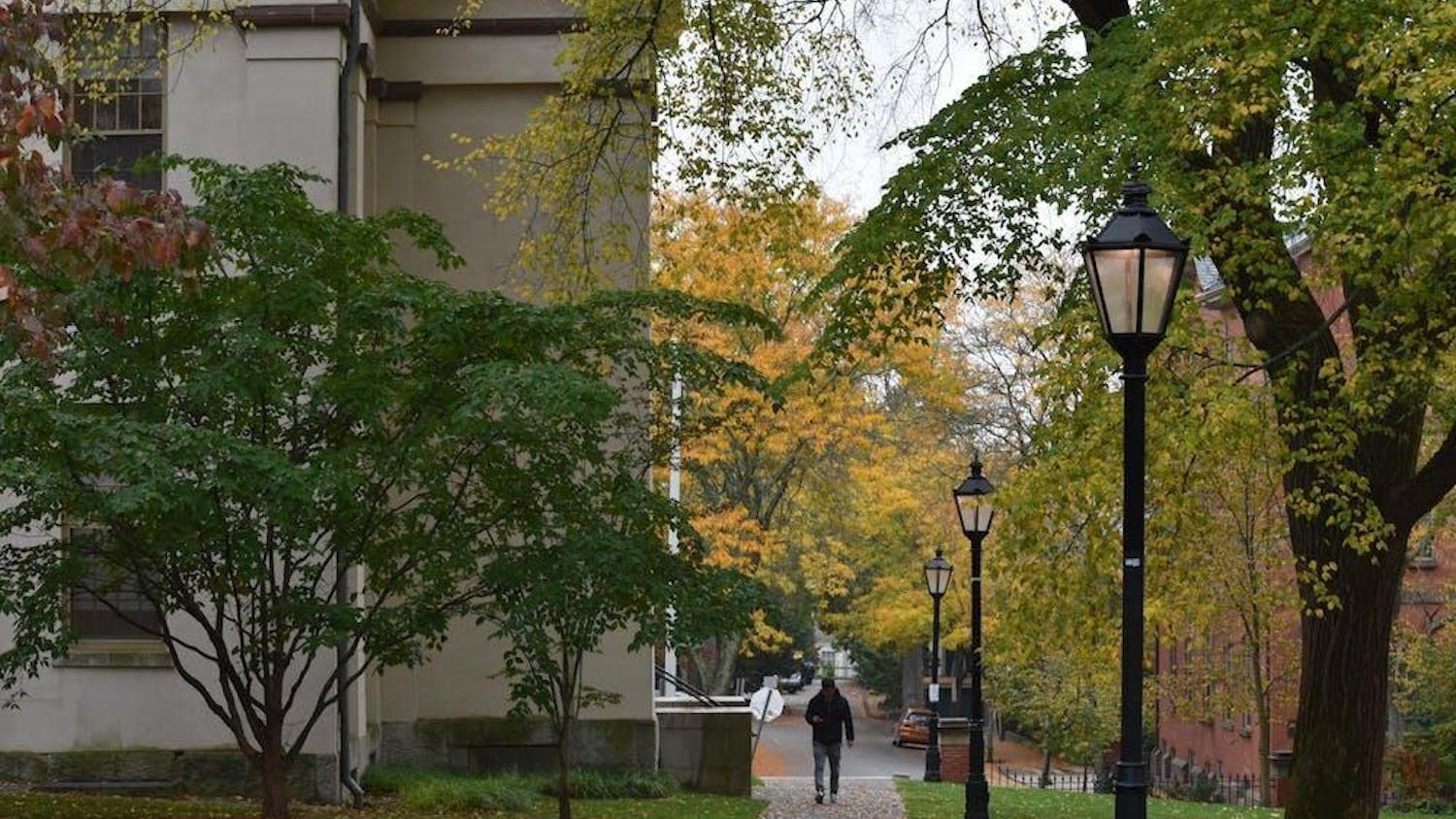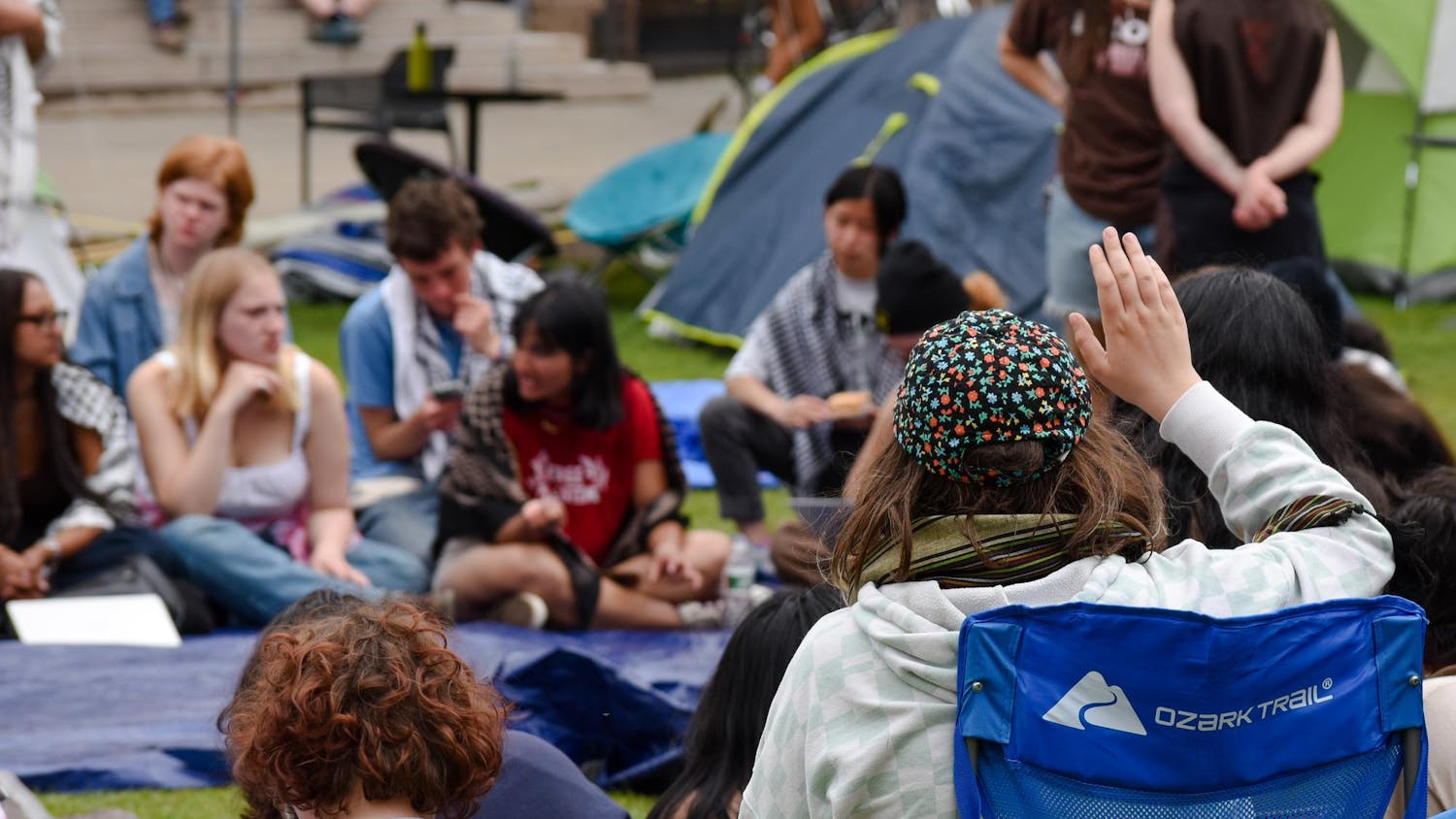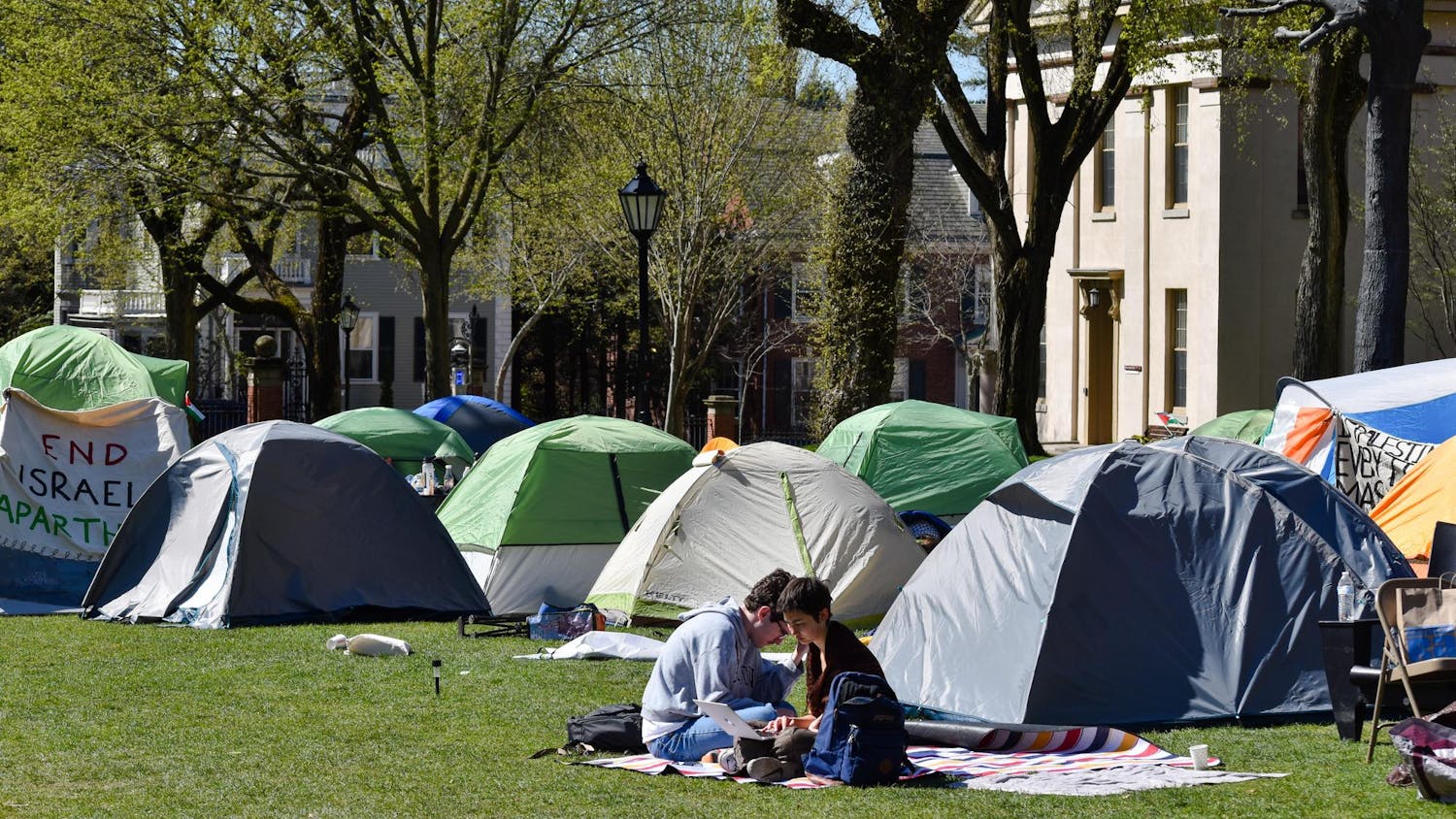Clad in purple and wearing strips of gray duct tape across their mouths, several dozen students streamed into the Sharpe Refectory at lunchtime Tuesday to stage a demonstration against sexual assault at Brown.
The event, organized and led by a group of Minority Peer Counselors, was intended to raise awareness about the prevalence of sexual assault on campus and urge students to take an active role in preventing it, organizers told The Herald following the event.
After roughly 75 students arranged themselves in a loose arc near the salad bar, they tore off the tape and read aloud a series of protest statements in unison. The demonstrators declared they were “representing the silenced voices.”
The demonstrators cited several statistics — that one in six women is sexually assaulted in her lifetime and that national studies generally indicate an average of 5 percent of college women are assaulted each year. For Brown, that statistic becomes 157 students assaulted annually, organizers said, the number that provided the name of the MPCs’ effort, the 157 Project.
The event arose out of the workshops that MPCs usually hold each semester — a group of MPCs decided they wanted to turn a sexism resource workshop into a more public demonstration of the reality of sexual assault at Brown and the way sexual assault is a “gendered act of violence,” said Sydney Peak ’15, one of the organizers.
The MPCs wanted to make the frequency of sexual assault at Brown real for students who might not recognize its pervasiveness, and “visually representing” the number 157 was a powerful tool, Peak said.
“It’s just outrageous that this is happening every year,” she said. Statistically, “we all know someone” who has been assaulted, even if students aren’t aware of it, she added.
The demonstration emphasized steps students can take to prevent sexual assault, like intervening if they see anyone taken advantage of while intoxicated at parties. Another goal of the event was to display campus support for assault victims by removing the silence and stigma surrounding the issue, said Will Furuyama ’15, an MPC and organizer. “Those people shouldn’t need to come forward for people to rally behind them and support them,” he said.
Event participant Eddie Cleofe ’15 said he hoped the demonstration could “begin discussions outside of the activist circles here at Brown.”
Though people understand that it happens elsewhere, “sexual assault is something that’s abstract here at Brown,” Cleofe said. Students’ perceptions of the campus community often stifle discussion or acknowledgment of the issue, he said — “I think it largely has to do with the (perceived) Brown ethos of being a super liberal, super sexually safe place. … It’s a greater issue about just the silence and assumed safety on this campus.”
Because the organizers wanted to maintain some secrecy about the demonstration during its planning stages, they reached out to various student groups and social media, having interested students contact a special 157 Project email for more information, Peak said. The group gathered in the Ivy Room Tuesday before entering the Ratty around 12:15.
The group finished the demonstration to scattered applause and snaps in the dining hall. Afterward, students expressed appreciation for what Ari Beller ’16 scalled a “powerful experience.”
“People know (about sexual assault) because people hear the statistics, but it is kind of abstract,” he said. “People don’t really recognize what it means until it happens to them personally or someone they know.”
Sonia Aronson ’14 said the number 157 stood out to her, especially because students can sometimes judge or deny others’ claims of assault. “Girls are really quick to write off other girls’ complaints about guys coming onto them,” she said.
Many students said they had not realized sexual assault was so prevalent at Brown.
Though current data on sexual assault at Brown are difficult to come by, a 2005 Alpert Medical School survey found that between 4 and 5 percent of undergraduate women reported being assaulted within the past year, said Bita Shooshani, coordinator of sexual assault prevention and advocacy at Health Services. But that study relied on a small sample size and less-than-ideal sampling methods, Shooshani said, so Health Services is planning a more comprehensive campus survey to be conducted in the fall.
A recent American College Health Association survey found that about 1.6 percent of undergraduate men reported having been assaulted — meaning attempted or actual sexual penetration — each year, Shooshani said.
Shooshani, who event organizers said is a vital campus resource for sexual assault victims, said she thought the demonstration was important for taking national statistics and “representing what that would look like on our college campus.”
Shooshani said she often hears people voice the perception that sexual assault is uncommon at Brown, which she connected to “the general myth that sexual assaults are happening by strangers.” Since students view Brown as a community, she said, they expect few assaults to happen.
But in reality, about 90 percent of assaults on college campuses are by people the victims know, she said.
Organizers said they have taken other steps to spread awareness and bolster support for sexual assault victims, including distributing table slips about resources on campus. They will also work with the organizers of One Billion Rising@Brown, a campus affiliate of an international campaign against gender violence, to hold a series of events on Valentine’s Day.
ADVERTISEMENT




